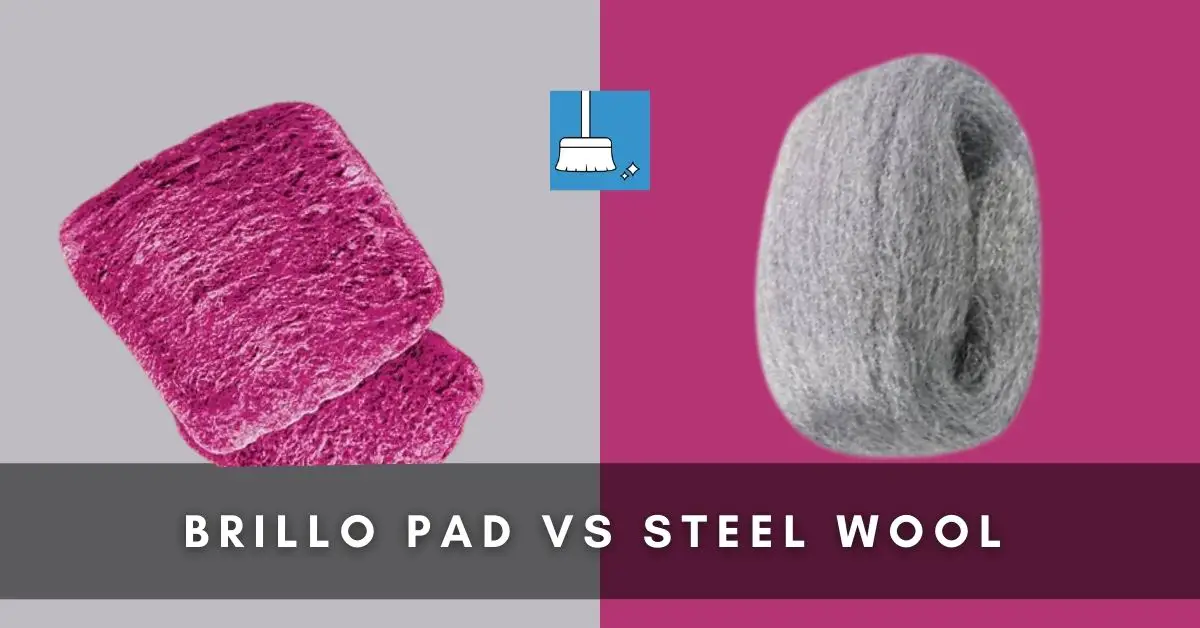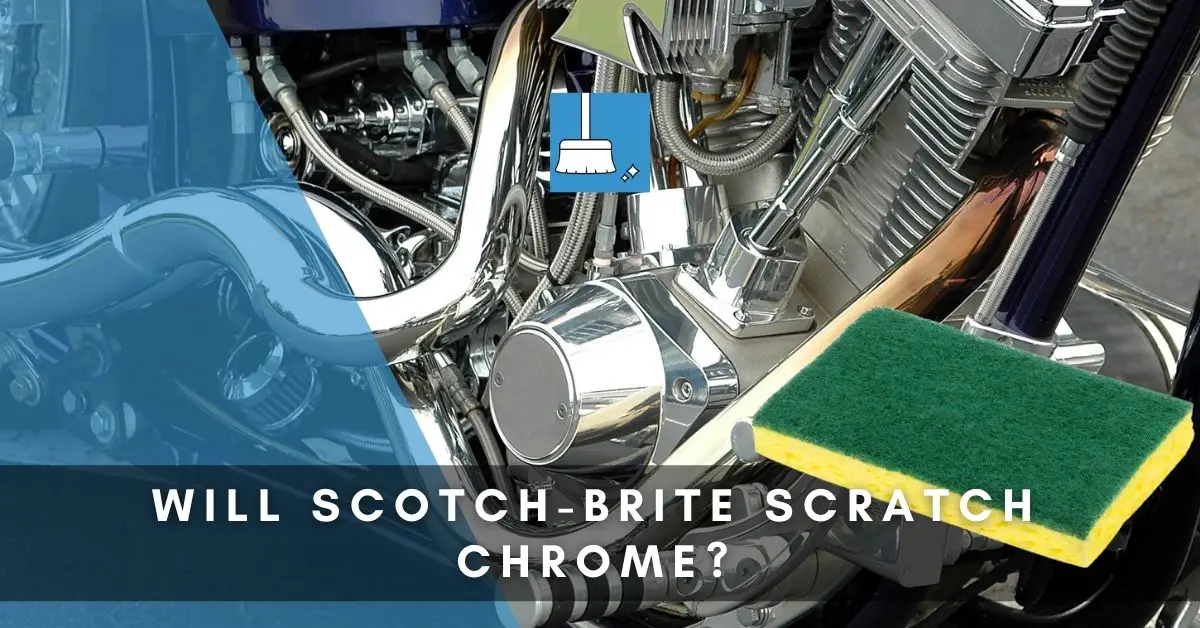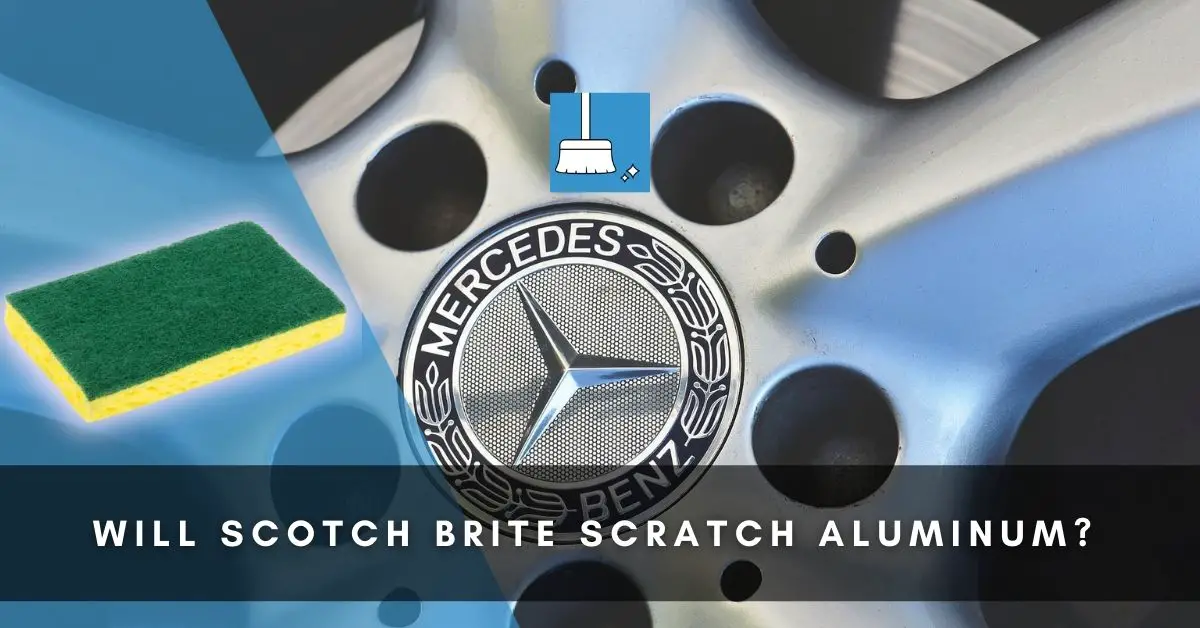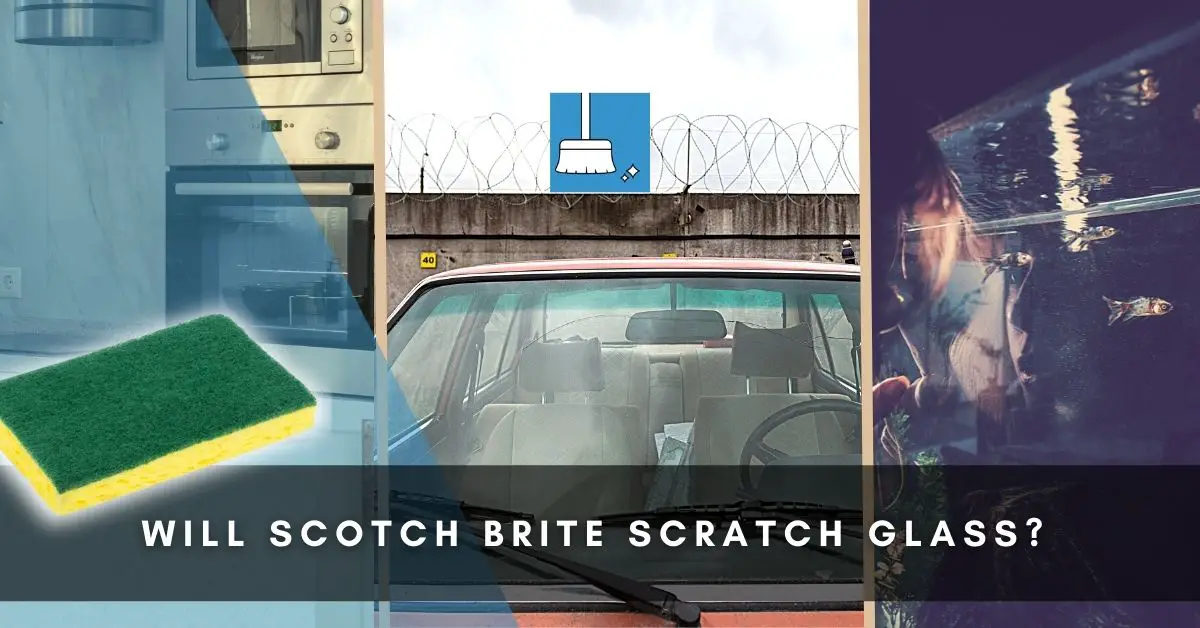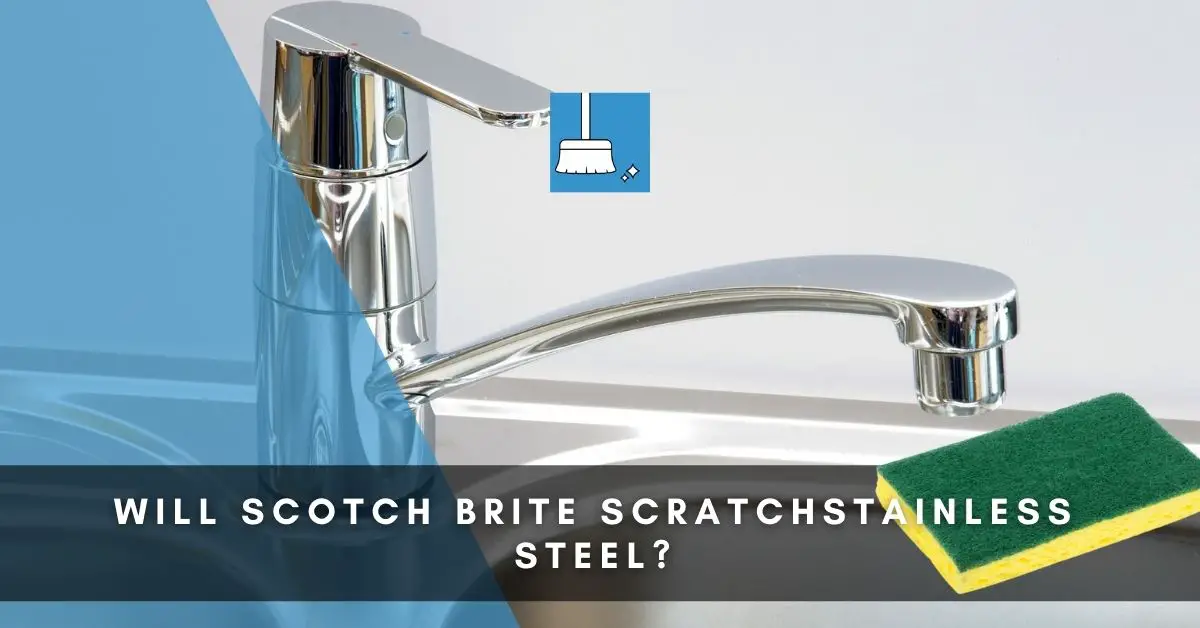Because Brillo pads are also sometimes referred to as Steel wool pads, it can be confusing to decide when buying either of the two.
Brillo pads are similar to steel wool but with a few differences. These differences are enough to influence your buying decision.
In this article, we’ll first look at the basic differences and then get into deeper point-by-point comparisons based on usage in various scenarios.
Brillo Pad vs Steel Wool
There are quite a few differences between steel wool and Brillo pads. Here they are:
Basic Differences
A. Brillo pads are made of steel wool but contain soap. They do not need to be used with soap, detergent, or any cleaner whereas a steel wool pad doesn’t contain any soap.
B. The Brillo pads also have colorant. They come in pink color which makes them distinct from steel wools that are in their natural metal colors.
C. Steel wool however has grades when it comes to coarseness which gives a lot of options to choose from; each having different purposes. Brillo pads don’t come in grades like that although the brand has a few types of pads.
Now let’s get into more comparisons between the two:
#1- Brillo Pad vs Steel Wool (Usage on Stainless Steel Comparison)
1- They Are Both Abrasives
Brillo pads (although contain soap) are as abrasive as steel wool. Both Steel wool and brillo pads are unsuitable for stainless steel because stainless steel gets scratched and damaged when cleaned with abrasives. Even chemicals like bleach will damage stainless steel.
Steel wool even has coarser grades that are more abrasive than Brillo pads and these would do serious damage to your stainless steel surfaces (such as sinks, cooktops, pans, etc.).
In addition to scratches, Brillo pads and steel wool will also leave particles on the stainless steel that will later rust and spread on
2- Some Steel Wool Is Better
We know we said they are both abrasives and should be avoided for stainless steel but like we earlier said, steel wool comes in different grades. This is the advantage it has over Brillo pads.
There’s a grade of steel wool named #0000 which is super fine. It is so fine that it can not only be used to clean stainless steel but to polish it.
It can be used with a stainless polish to give your stainless steel a good finish that will delight you. Brillo pads cannot be used to do this.
#2- Brillo Pad vs Steel Wool (Usage on Tub Comparison)
They are both too abrasive for tubs.
Brillo pads should not be used to clean or remove stains from bathtubs as they can damage the finish.
If the finish is made of porcelain, the Brillo pad will remove the coating and it would need to be recoated in areas affected before it can go back to normal.
If the tub finish is made of fiberglass, the Brillo pad will cause many scratches and damage the surface.
The same is true for steel wool. Steel wool causes permanent scratches on fiberglass tubs. They also damage the finish of porcelain tubs and can even cause them to crack when scrubbed with pressure.
It could also leave residues on the tub that will make it look dull. Even the #0000 grade of steel wool isn’t suitable.
Tip: Using a magic eraser is better on fiberglass tubs.
#3- Brillo Pad vs Steel Wool (Usage on Oven)
Brillo pads are great on the oven. You can use Brillo pads to get rid of grime, stubborn stains, and burnt marks from ovens.
They are effective in cleaning the racks, trays, doors, and even the interior without causing damage.
They have soap embedded in them so it reduces their abrasiveness on the oven surface, but ensure you don’t apply much pressure while using them.
You can’t be wrong while using Brillo pads on your oven but you can be wrong with steel wool. Steel wool will scratch your oven and remove the enamel finish if used to clean it.
You can only get the result you desire if you use #0000 steel wool. This is why you can go wrong with it.
Any kind of Brillo pad can be used to clean your oven but not any kind of steel wool can be used.
#4- Brillo Pad vs Steel Wool (Usage on Cast Iron)
Brillo pads can be used to clean cast iron but they shouldn’t be used frequently. The Brillo pad will remove the stains and grime you want to clean but it will also remove the seasoning from the cast iron, damaging it.
Cast iron utensils are not supposed to be cleaned with soap as soap can wash away or damage their protective layer. And you know that Brillo pads have soap in them.
They should only be used when it is important and you run out of better options.
Steel wool on the other hand has no soap in it so there’s no risk of soap damaging your cast iron. Heating your cast iron and using steel wool with hot water is enough to get it clean.
Because steel wool is abrasive, it may still damage the cast iron. It may still remove the protective layer. To reduce the risk of this you can use finer grades of steel wool like #0000, #000, etc.
So when it comes to cleaning cast irons, steel wool is still better than Brillo pads.
Whether you use one or the other, you should be ready to reseason your cast iron after cleaning. This is important if you used Brillo pads or steel wool to remove rust from the cast iron.
Cast iron needs to be reseasoned so your food won’t stick while cooking. Reseanoning your cast iron also prevents future rust.
#5- Brillo Pad vs Steel Wool (Usage on Glass)
Brillo pads do not scratch glass but you want to be careful while using them though. Don’t apply too much pressure.
Steel wool also does not scratch glass but only if it is #0000 grade. Any other grade of steel wool will scratch glass. Using Brillo pads may be better as it is less stressful and faster.
For steel wool not to scratch glass, you have to use it with soap and water.
However, Brillo pads already have soap in them. So you don’t need an additional cleaning agent before cleaning your glass oven doors, shower doors, etc. Once you wet your Brillo pad, it is ready for use.
#6- Brillo Pad vs Steel Wool (For Keeping Mice out)
Mice can be a pain in the bum, especially when they made their cozy holes or when they hide behind appliances. They need to be removed as soon as possible.
Both Brillo pads and steel wool keep mice out of the house. Since Brillo pads are just steel wool with soap in them, they work the same way in keeping mice out. You just have to mix either of them with caulking before use, so the hole you are stuffing can be properly sealed.
However, steel wool is sometimes better, especially if you are stuffing big holes.
To effectively stop mice from entering and chewing their way through, you need at least a medium-grade steel wool. This grade is very coarse and will hurt the mice if they try to chew through so they will avoid it.
A finer grade may not be much effective. Brillo pads are steel wool and they are abrasive, but they are not as abrasive as the grades of steel wool that are often used to keep mice away.
So steel wool is mostly preferred to keep mice away than Brillo pads. It could even kill them. Though for small holes, you could go with Brillo pads.
Tip: If there are even larger holes, where mice can push the steel wool around, use copper wool.
#7- Brillo Pad vs Steel Wool (Removing Rust)
Both Brillo pad and steel wool excel at removing rust. Brillo pads can remove the surface rust on almost any material; like metal, aluminum, chrome, etc.
Steel wool is however much preferred to Brillo pads when removing rust.
Brillo pads are abrasive but only abrasive enough to remove surface rusts. They are not made of the coarser grades of steel wool which makes them excellent for cleaning glass and other delicate objects.
Steel wool, on the other hand, has the advantage of variety. We have the fine and superfine grades that are efficient in removing surface rusts.
We also have coarser grades that can be used to remove deeper and long-standing rusts. These grades of steel wool are so coarse that they can remove the finishes of any material taking the rusts off them along with it.
Pros and Cons of Brillo Pads
Pros
1- They have soap already in them.
2- They are flexible and easy to use.
Cons
1- There are limited options as Brillo pads don’t come in different grades of coarseness like steel wool.
2- Not all cleaning requires soap like in the case of cast iron.
3- Brillo pad often defoams other soaps when it comes in contact with them, making cleaning sometimes difficult.
Pros & Cons of Steel Wool
Pros
1- There are many options to choose from. Each grade of coarseness is suitable for one particular task or the other. It is easy to find out which grade is required for the job at hand.
2- The finer grades do not only clean but can also be used to polish surfaces like aluminum and chrome to a fine finish.
3- It can be used to sand wood.
Cons
1- You need soap or other cleaning materials with them for effective cleaning.
Final Thoughts!
Although similar, we know that Brillo pads and steel wool are different.
This is why they have been thoroughly compared in this article to bring their similarities and differences to light in great detail. This will help you to choose the best one for whatever task or job you want to be completed, as we have also explained how each is best used and the task they are best suited for.
Make sure you clean and store the steel wool or Brillo the right way to protect it from rusting and damage.

